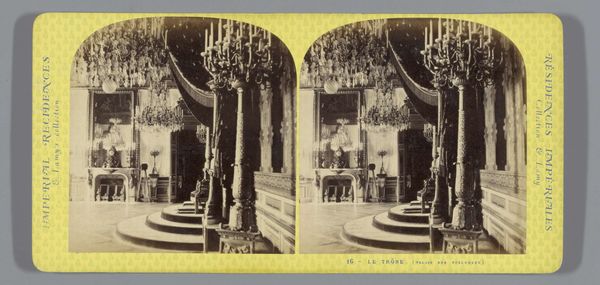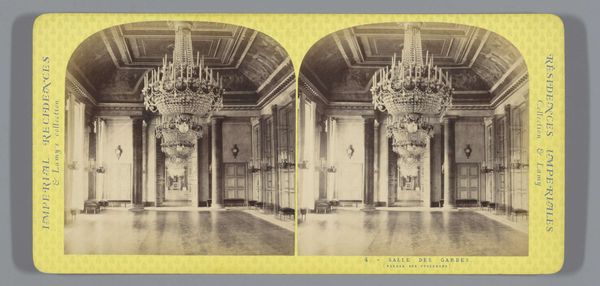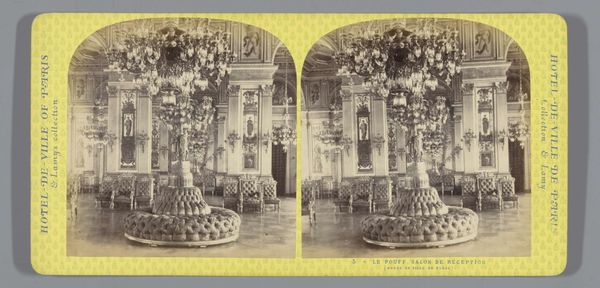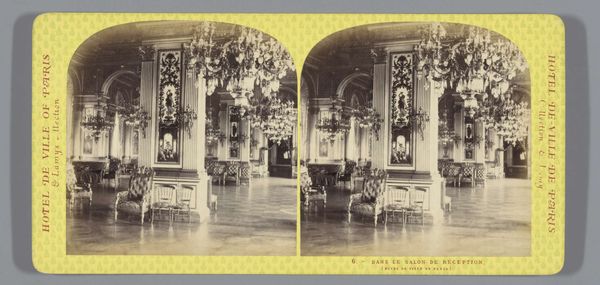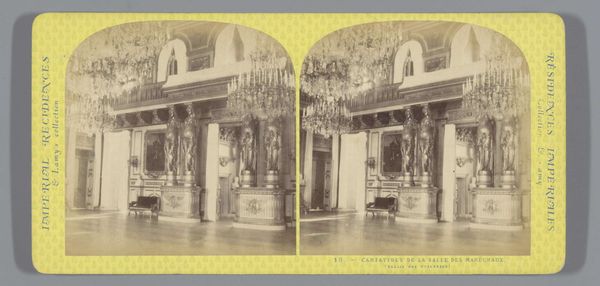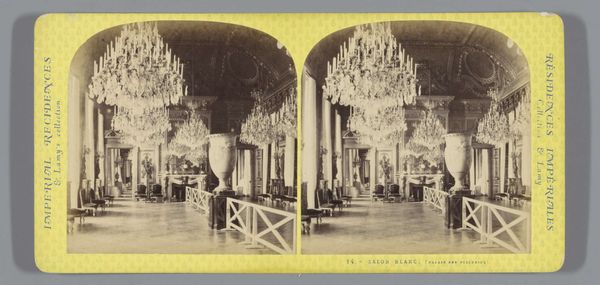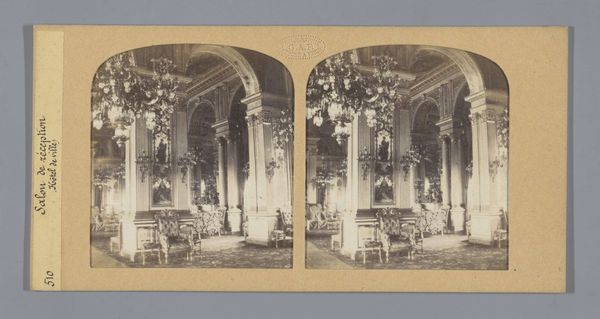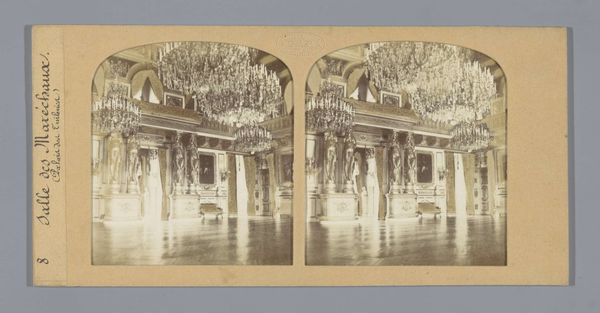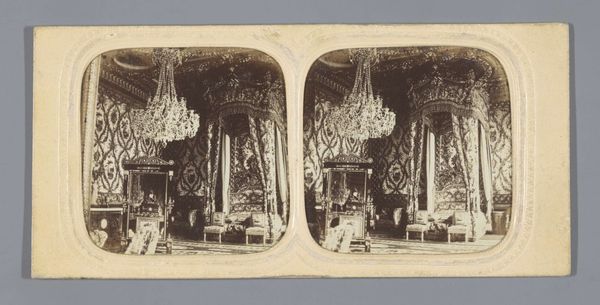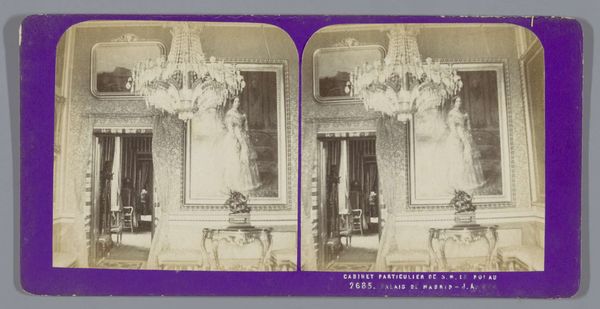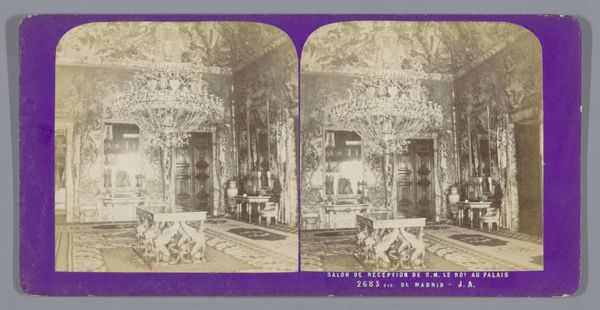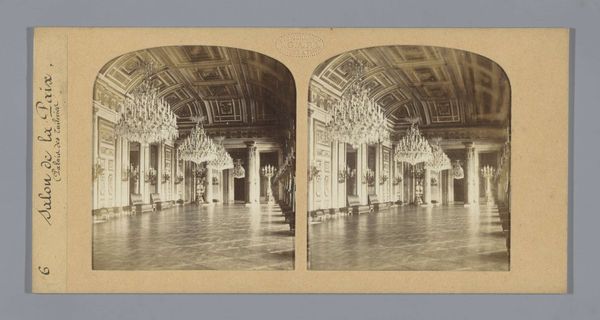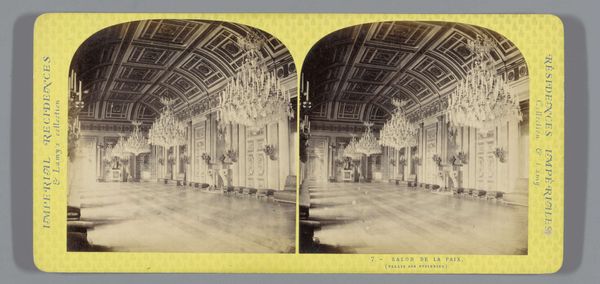
print, photography, albumen-print
# print
#
photography
#
cityscape
#
albumen-print
Dimensions: height 85 mm, width 170 mm
Copyright: Rijks Museum: Open Domain
Curator: This albumen print, taken circa 1860-1880, is by Ernest Eléonor Pierre Lamy and is titled "Receptiezaal van het stadhuis van Parijs," which translates to "Reception Hall of the Paris City Hall." Editor: What strikes me immediately is the opulent stillness—the room seems staged, almost theatrically so, devoid of people yet brimming with the implicit promise of power. Curator: Indeed, Lamy captures an immaculate interior. Note the interplay of verticals established by the fluted columns, mirrored in the ornate chandeliers hanging from above, and balanced by the horizontal expanse of the seating. The sepia tones lend a timeless, neoclassical structure to the entire composition. Editor: Yet this apparent formality veils the very specific historical circumstances under which this image was created. France during this period was undergoing significant political and social upheavals. The photograph itself seems to almost mask a profound need for public display to reaffirm a sense of cultural order and political legitimacy amidst ongoing tension. Who was welcome in the reception hall, and who was not? What values were on display here? Curator: Those concerns are not necessarily within the visual rhetoric of the composition itself. Lamy manipulates light and shadow meticulously. The diffuse lighting softens the edges, focusing our gaze on the grandiosity of the setting. It evokes an atmosphere of composed elegance, reflecting the Second Empire's ambition for Parisian cultural supremacy. Editor: But by choosing this angle, framing these elements in this way, Lamy isn't just capturing the physical space. He’s constructing a narrative, one of unbroken continuity of power. We can look at the City Hall—or the specific function of the salon de réception as the heart of French power: the stage where the rituals of the ruling class take place, and decide who belongs to French Society. It’s less a neutral record and more a deliberate representation of ideology. Curator: I concede that understanding its function helps illuminate this image. Ultimately, "Receptiezaal van het stadhuis van Parijs" presents a fascinating, if constructed, portrait of ambition frozen in time. Editor: And an important reminder that even seemingly neutral depictions of architectural spaces are deeply imbued with power.
Comments
No comments
Be the first to comment and join the conversation on the ultimate creative platform.
